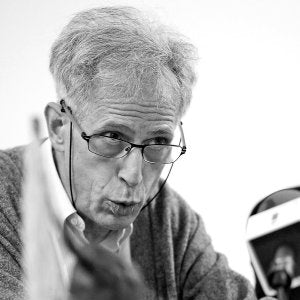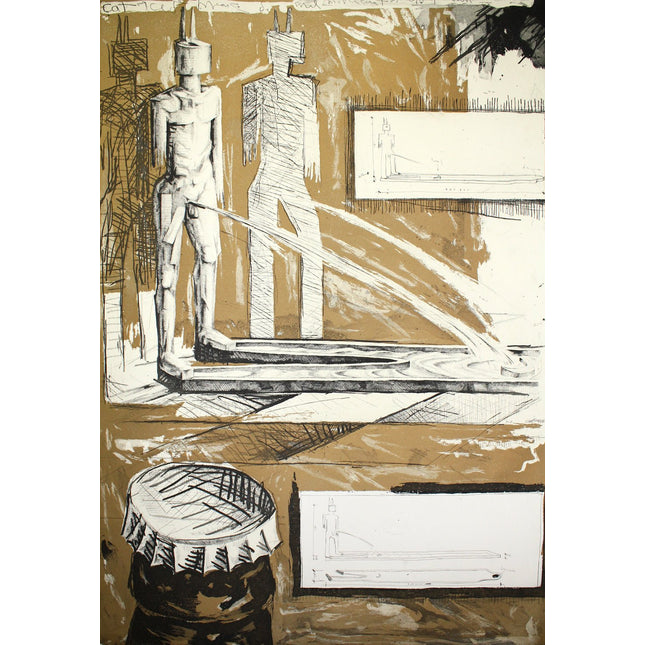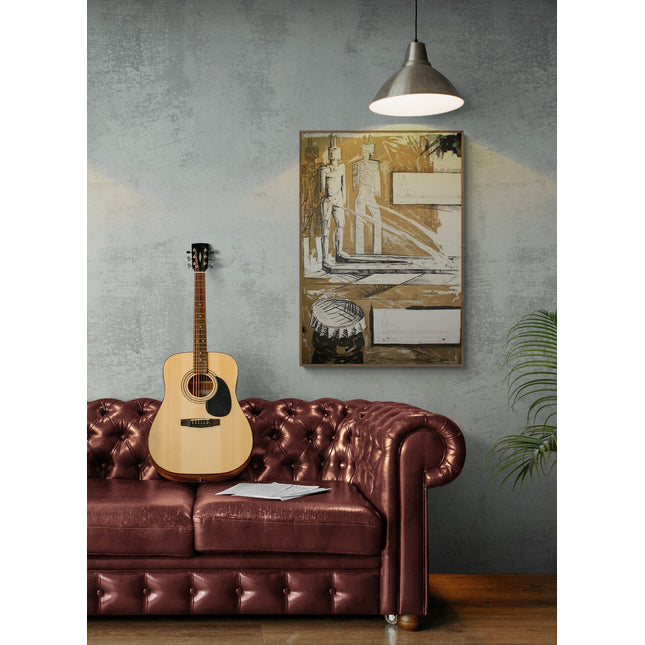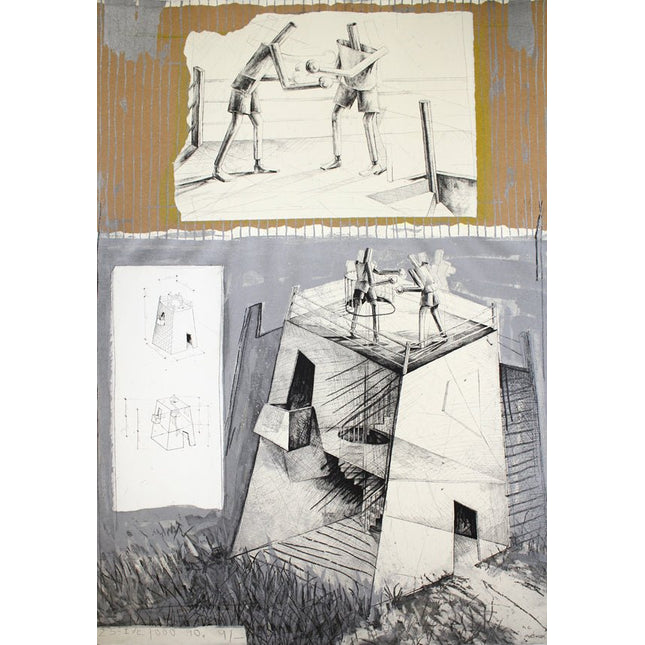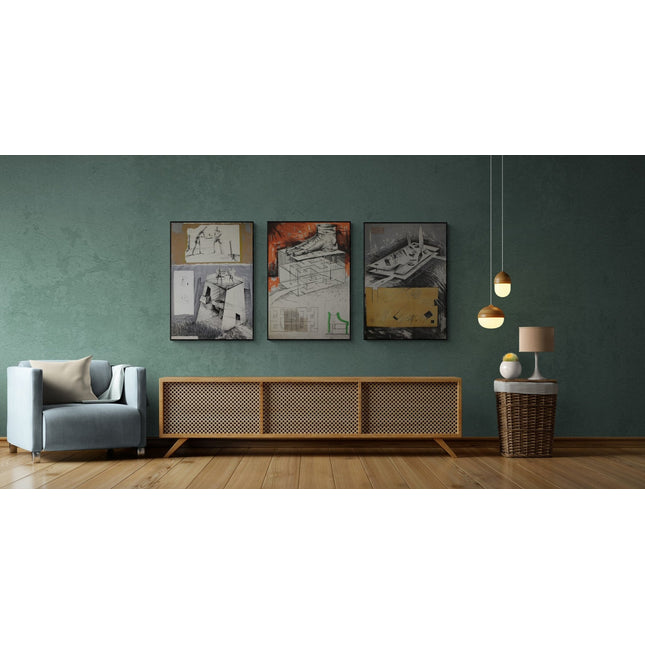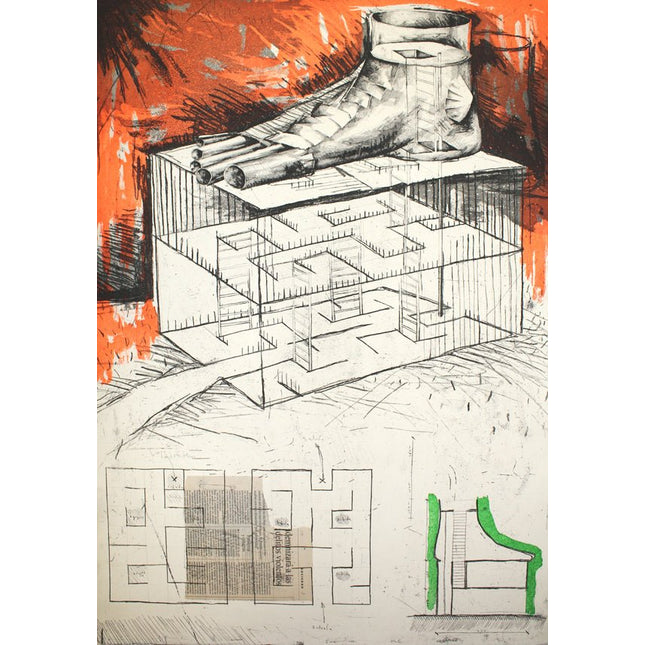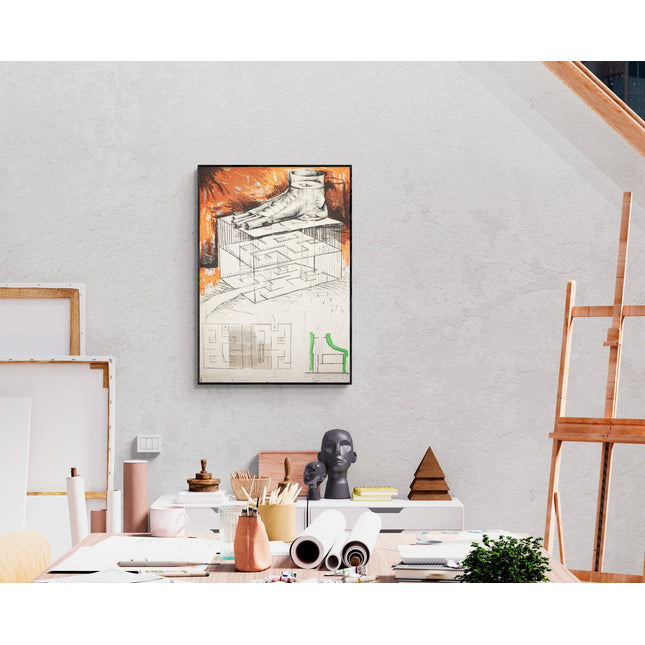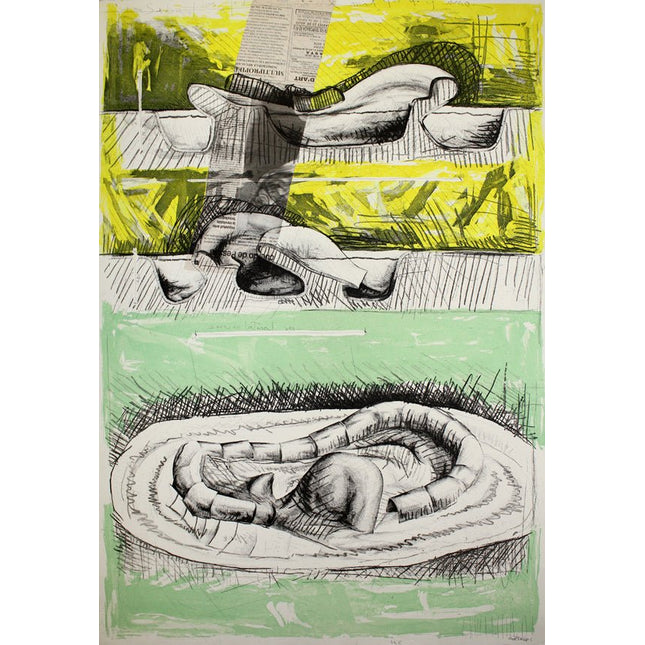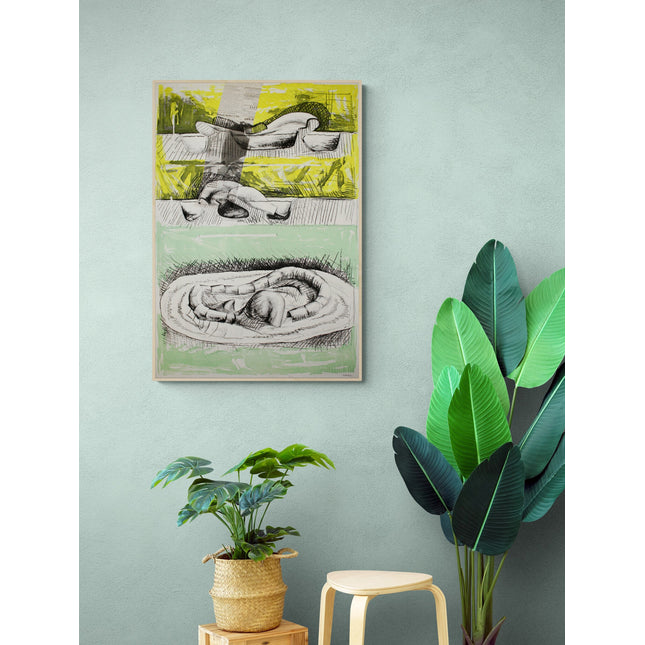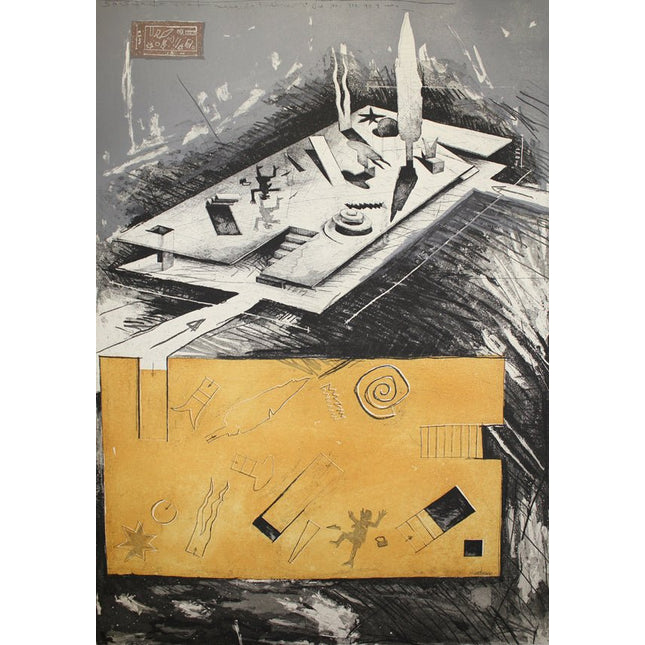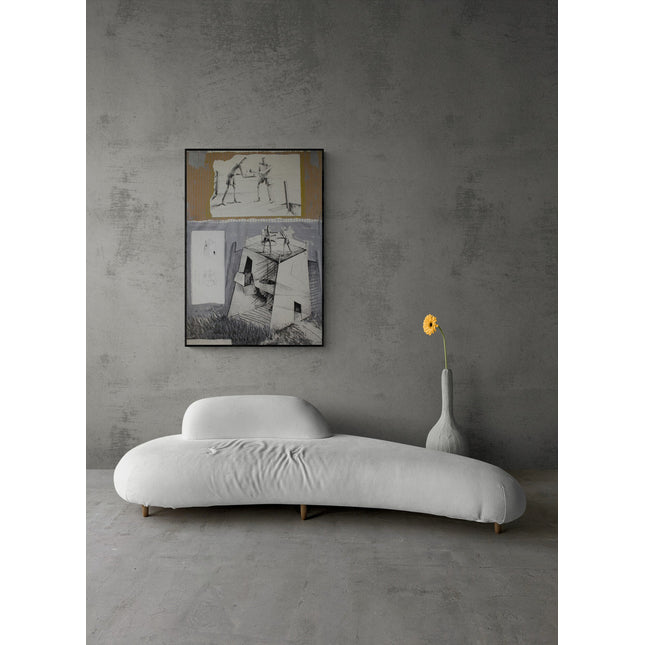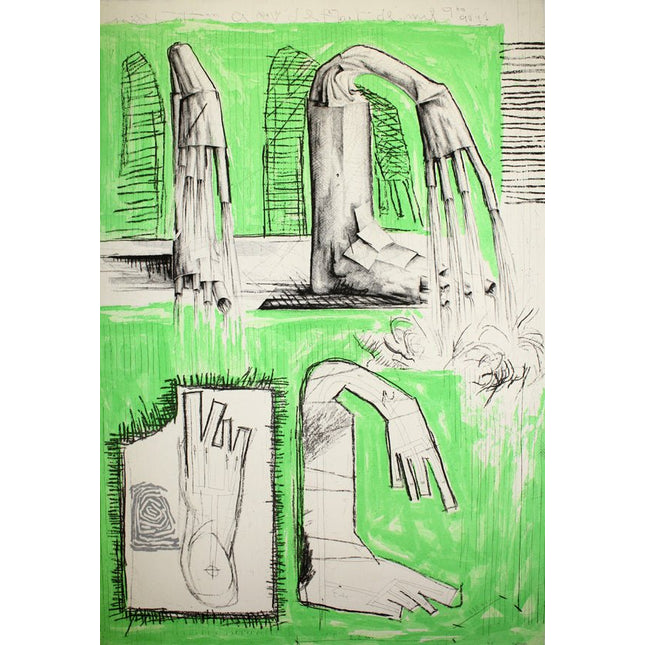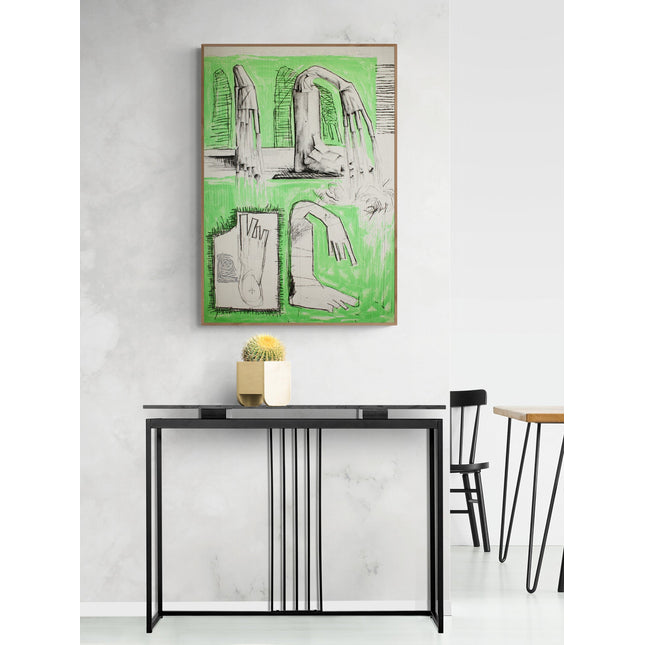Andrés Nagel Tejada is a Spanish painter, sculptor and printmaker born in San Sebastian in 1947.
Nagel completed his studies in architecture in 1972 in Pamplona. During this time as a student he began to work in engraving techniques.
Since then he starts to travel to other European countries and the north of Africa. The Spanish scene at that time was dominated by abstraction and already had international recognition thanks to artists such as Chillida and Tapies, but Andres Nagel, who didn't feel identified with these trends did tune with the artistic movements that found in other countries such as Italy, Switzerland and Germany and soon opted for figurative art.
A controversial artist, he rose to prominence with some of his works at the beginning of his career. In the mid 70's Nagel started to show his works in many exhibitions, both collectively and individually. Noteworthy among these events, his participation in the exhibition "New Spanish Painting" on Hastings Gallery in New York that introduced him to the American public. In 1978 also participates in a very important exhibition that pays tribute to the work of Joan Miró in Mallorca.
During the 80's the artist works in numerous international exhibitions in cities like Varna, Dortmund, Bonn, Basel or Baghdad. In 1988 the Museum of Fine Arts in Bilbao exhibits the graphic work of Nagel, in this show a catalogue raisonné is edited. In 1989 he began his collaboration with the gallery Tasende California and participates in many American art fairs.
Thereafter Andrés Nagel travels the world and his work is present in several countries including Mexico, Japan, Singapore, China, France, Canada, Germany or Italy.
In 2003 Nagel inaugurates in Amorebieta (Vizcaya) a bronze sculpture of eight meters high that he entitles "La patata" (the potato). Unparalleled defender of the intellectual property, the transfer of this work for urban reasons is considered by Nagel as an insult to his work, leading him to sue the city council. In 2009 re-litigated against a porcelain company that, according to the artist, plagiarizes his designs and get benefits from them without his consent.
Andrés Nagel's work can be defined within the postmodern figuration, and tackles social issues with a personal style influenced by other trends such as Pop Art, Surrealism, and povera art. The artist experiments with different aesthetic languages and different materials such as lead, polyester or fiberglass and also shows a clear interest in painting combined with sculpture and printmaking techniques.
The artist is retired since 2006 and since then has not participated in any exhibition.
